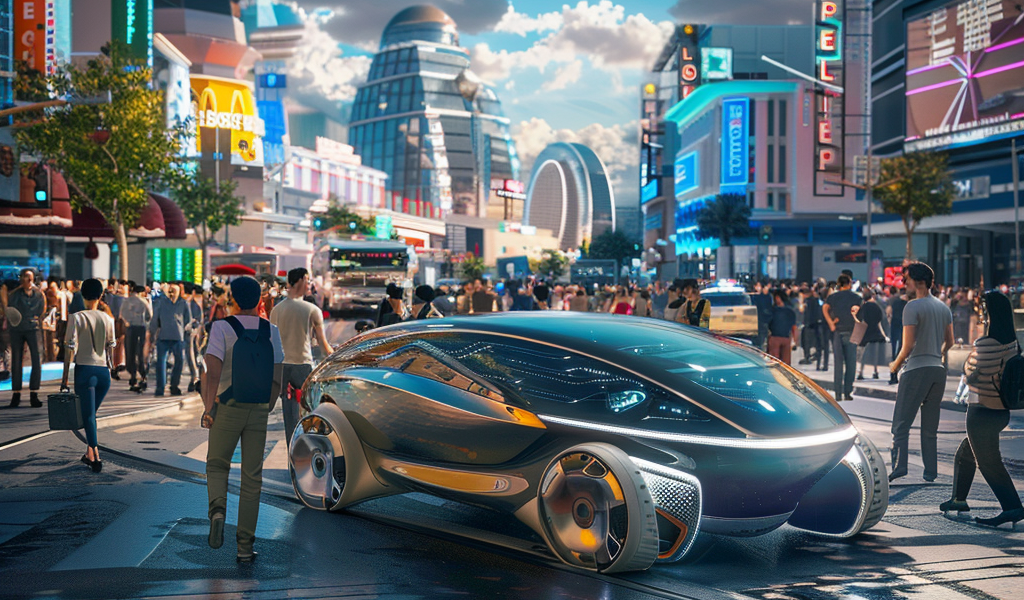GM Halts Funding for Cruise Robotaxi Operations, Shifts Focus to Personal Vehicle Technologies
In a significant shift in strategy, General Motors (GM) has announced that it will cease funding the development of its Cruise division’s robotaxi operations. This decision, communicated on Tuesday, reflects the automaker’s response to the intensifying competition within the robotaxi market, as well as a reassessment of its capital allocation priorities. GM emphasized that the substantial time and resources required for the growth of the robotaxi business played a crucial role in this decision.
Mary Barra, the CEO of GM, elaborated on the company’s rationale during a conference call, stating, “Cruise was well on its way to a robotaxi business — but when you look at the fact you’re deploying a fleet, there’s a whole operations piece of doing that.” This acknowledgment highlights the complexities involved in managing a fleet of autonomous vehicles, which includes not only the technology but also the operational logistics.
Going forward, GM plans to realign its autonomous driving strategy, shifting its focus towards advanced driver assistance systems and autonomous technologies intended for personal vehicles. This pivot indicates a broader trend in the automotive industry, where manufacturers are increasingly prioritizing the integration of autonomous features into consumer vehicles rather than pursuing extensive robotaxi services.
As part of this strategic realignment, GM intends to merge the majority-owned Cruise LLC with its technical teams. While the specifics regarding employee transitions remain unclear, Barra noted that discussions are ongoing about how many of Cruise’s nearly 2,300 employees will be integrated into GM.
Currently, GM holds approximately 90% ownership of Cruise, with plans to enhance this stake to over 97% through agreements with other shareholders. The company anticipates that it will finalize the acquisition of the remaining shares from external shareholders by early 2025, as stated by CFO Paul Jacobson.
Prior to this restructuring, GM’s annual spending on Cruise was around $2 billion. The new strategy is expected to reduce this expenditure by more than half, marking a significant shift in financial commitment to the autonomous vehicle sector.
This decision to withdraw from the robotaxi market is particularly striking given that GM has invested over $10 billion in Cruise since acquiring the company in 2016. The substantial financial backing reflects the automaker’s initial optimism about the potential for autonomous ride-hailing services.
Honda, a key external investor in Cruise, has also been affected by GM’s decision. The Japanese automaker had intended to launch a driverless ride-hail service in Japan by early 2026. However, in light of GM’s announcement, Honda indicated that it will reassess its plans and make necessary adjustments. A spokesperson for Honda reaffirmed the company’s commitment to various research and development initiatives aimed at delivering innovative mobility solutions to customers in Japan.
The U.S. robotaxi market, once seen as a burgeoning frontier for autonomous technology, is now facing challenges that have prompted major players like GM to reevaluate their strategies. The competitive landscape has become increasingly crowded, with various companies vying for dominance in the sector, leading to a reconsideration of the viability and profitability of robotaxi services.
As GM shifts its focus toward enhancing driver assistance technologies for personal vehicles, the future of autonomous driving may increasingly center on consumer adoption and integration into everyday transportation rather than the ambitious vision of fleets of robotaxis. This evolution in strategy underscores the dynamic nature of the automotive industry as it navigates technological advancements, market demands, and operational realities.
In summary, GM’s decision to discontinue funding for Cruise’s robotaxi development marks a pivotal moment in the autonomous vehicle landscape. As the company pivots towards personal vehicle technology, the implications of this shift will likely resonate throughout the industry, influencing the direction of future innovations and investments in autonomous driving solutions.





